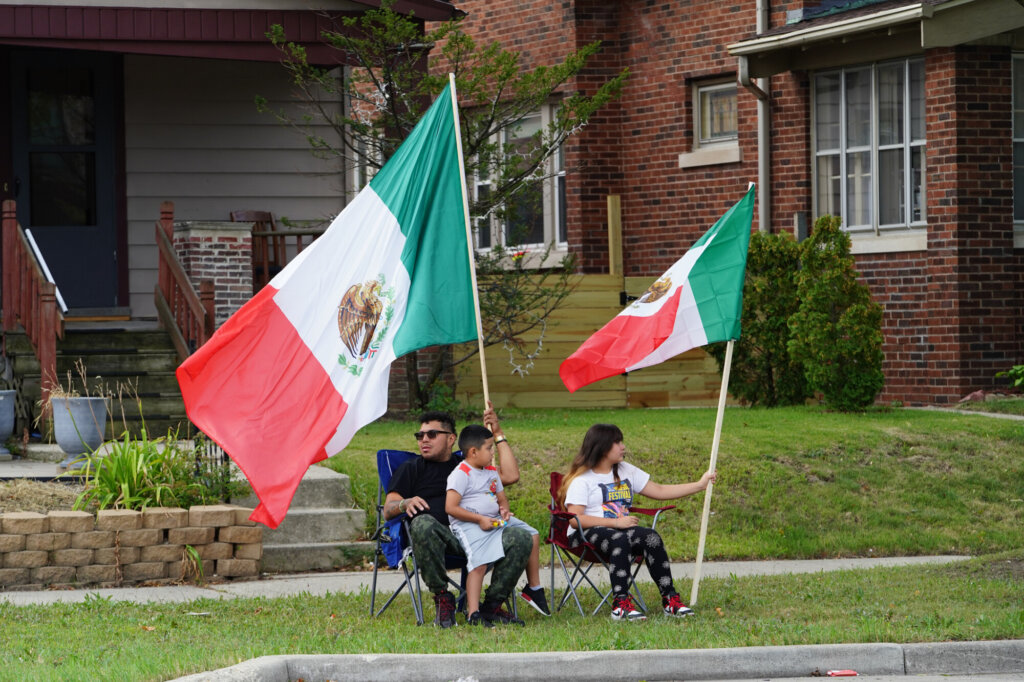Latinos in the Suburbs

New Report Looks In-Depth at Trends
Latinos in The Suburbs, created in close collaboration with the Latino Policy Forum and the Univer of Illinois Chicago’s Great Cities Institute, provides a multi-faceted analysis of Latinos living in the Chicago suburbs. It examines their general opportunities and hardships, how they fare, and the gaps in opportunities and hardships compared to their non-Latino counterparts.
Download the full report here.
Latinos driving growth in the region
The Latino population in the seven-county Chicago metropolitan area has more than doubled since 1990. In addition, the Latino population growth between 2010 and 2020 exceeded the non-Latino population growth in each of the seven counties within the Chicago metro region. Some 1.2 million Latinos, or more than 50% of Latinos living in Illinois, live in the suburbs of the seven counties in the Chicago metro region.

Between 1990 and 2000, the Chicago metro region’s Latino population grew by approximately 570,000, with the suburbs experiencing a growth of more than 360,000 in Latino population, while Chicago’s Latino population grew by just over 200,000. That diverging population trend continues today. For example, between 2010 and 2020, about 84% of the Latino population growth in the Chicago metro region happened in the suburbs, and only about 16% occurred within the city of Chicago.
It is, therefore, imperative that we fully understand where Latinos live, what challenges and barriers they confront, and what opportunities are available to them. A few key trends emerge when looking at Latino population change from 2010 to 2020.
New patterns revealed
First, most municipalities in the Chicago region saw an increase in Latino population, while only 18 experienced a net loss. For example, Aurora, the second-largest city in Illinois with a historically significant Latino population center, had a net loss of 6,828 Latinos, representing the most significant loss of any municipality in the region. While West Chicago saw a 555-person decline in its Latino population and Highwood a 476-person decline, the other 15 municipalities saw Latino population declines of fewer than 300.

While the Latino population in the past decade grew in most municipalities throughout the suburbs, the degree to which the Latino population grew in different parts of the suburbs tells a much more complex and nuanced story. For instance, Latino population growth in municipalities with lower percentages of Latinos far outpaced growth in municipalities with higher percentages of Latinos.
Questions, challenges, opportunities
In recent decades, the Latino population in the Chicago suburbs and exurbs has grown faster than anywhere else in Illinois. As Latinos continue moving into areas more geographically disconnected from the city and longstanding suburban Latino population centers close to the city, questions about the challenges and opportunities in different parts of the Chicago region are more apparent.
Are Latinos moving to places of high opportunity, or are they moving into areas where they face greater hardship? For example, are Latinos in Melrose Park and Berwyn – older, inner-ring suburbs – presented with different challenges and opportunities than Latinos in the farther-flung exurbs of Woodstock and Plano?
The findings in this report accentuate the paradoxical tensions between the significant contributions Latinos make to the macro-level socioeconomic growth and stability of the Chicago metro region – including their high rates of consumer buying power, labor force participation, and homeownership – and more specific challenges they face, including being the racial/ethnic group with the lowest per capita income and having the largest percentage of workers earning less than $15 per hour.
While 47% of Latino households in the suburbs earn more than $75,000, they are twice as likely to live in poverty as are non-Latinos. And the per capita incomes of Whites, in suburban counties such as Lake and Kane, for example, are more than twice those of Latinos. Even with a 4% increase between 2010 and 2020 in the number of suburban Latinos who have earned at least a Bachelor’s degree, non-Latinos in the suburbs are still three times more likely than Latinos to have a higher educational degree. Finally, as of 2021, about 60% of Latinos in the suburbs own their home, compared to 76% of non-Latinos. However, Latinos in the suburbs were six times more likely than non-Latinos to live in overcrowded conditions.
Prioritizing Latinos’ needs
The analysis in this report strongly suggests several policy directions. However, our focus here has been to tell the untold complex Latino suburban story, not to delineate its policy implications. This story underscores the need for the development and implementation of policies designed to address the challenges and inequities Latinos face in the suburbs, which will require a concerted effort at the regional, county, and municipal levels to prioritize and grapple with the central challenges highlighted in this report. And all of this will require coordinated efforts between the region’s public, philanthropic, and private sectors. This report provides a broad overview of both the overall and the more specific challenges and opportunities facing Latinos in the Chicago suburbs.

The socioeconomic improvements being made by suburban Latinos cannot be ignored, but the challenges they face should not be understated. The data in this report show that the socioeconomic well-being of Latinos in the suburbs has improved between 2010 and 2020, but it also dramatically highlights that the socioeconomic vitality contributed by Latinos has yet to be fully reflected in the lives of many Latinos.
Addressing problems of equity for Latinos necessitates urgent attention to the issues and data presented in this report. A successful response to these problems requires that those responding understand the complexities and nuances of the suburban Latino story and ensure that they inform policy development and implementation.
